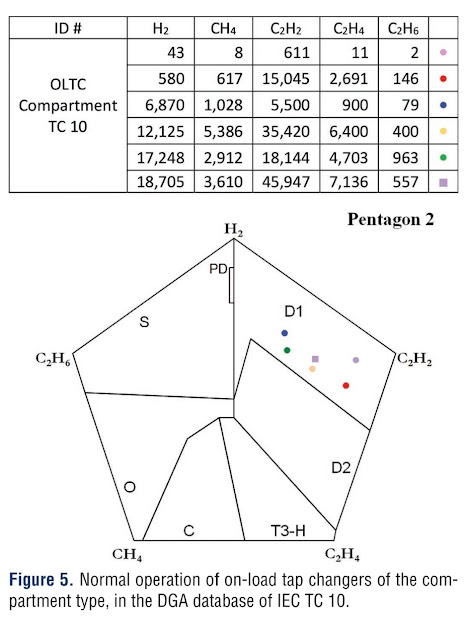Residual Moisture
has reached an equilibrium point. This equilibrium point will depend on the unit's operating temperature as well as the total moisture content of the insulating system, the oil, and the core.
- Please note that the core can only be dried out in the oven for a limited time, as the paper will start to crack and decompose if all the moisture is taken out of the structure.
Moisture ingress
Direct exposure
This will occur when the transformer insulation is exposed to air - during the installation and repair processes.
Molecular flow (Knudsen flow)
This type of flow will occur when there is a difference in water vapor pressure in the atmosphere and the transformer gas space or oil. This term describes the diffusion of gases through a tiny opening, like a gasket that does not seal completely. [1,2]
Viscous flow
This will happen when there is a difference in total pressure when the atmospheric pressure is higher than the tank's pressure. This will happen through the conservator system of free-breathing units.
The main points to remember
The molecular flow will have a negligible influence on the moisture of the system.
The primary mechanism through which water will penetrate the system is through low seals by the flow of wet air into the unit because of higher air pressure outside the tank. Typical leaks that will allow this phenomenon would be at the top gasket seals at the explosion vent and forced oil-cooled units between the main tank and the coolers. Although no oil leaks are visible, there might be an ingress of atmospheric air. In water-cooled systems, water might penetrate the cooler into the oil, even if it is at a higher pressure.
Large amounts of rainwater can be sucked into the transformer in a concise time (several hours) when a rapid drop in pressure on the inside of the tank occurs ( this can be induced by rain) in combination with insufficient sealing. This becomes a real problem when transformers are stored with some oil without the conservator preservation system.
The contamination rate with moisture is significant for free-breathing transformers with conservator tanks, although it is limited.
Research has shown that transformers with free-breathing systems have a moisture contamination rate of up to 0.2% per year. Most of this water is retained in wet zones and not evenly distributed throughout the complete system. It was found that only about 0.5 to 0.6 % of water is extracted from the cellulose insulation during the drying process, even if the water content can be as high as 2.5% in thin cellulose structures.
The water contamination rate for units with membrane-sealed conservator systems is only about 0.03-0.06% water in the cellulose material.
Units with broken seals or insufficient sealing have over 50kg of free water from both open-breathing and membrane-sealed conservator systems. The damaged heat exchanger can be the source of substantial amounts of water moving into the oil in a water-cooled transformer.
Opening a transformer and exposing its core will cause more considerable water ingress into the cellulose system than a unit with an imperfect preservation system will display after many years.

This table is sourced from [1]
Moisture Contamination during exposure of the active parts to the atmosphere
The transformers' outer insulation layers quickly absorb moisture, but the diffusion of these moisture molecules into the inner layers will take a long time.
The air's relative humidity is critical because it will determine the moisture absorbed by the insulating material.
95% of the absorbed moisture will be confined to the insulation with depths of 0.3 to 0.35 mm. Moisture is concentrated in the outer layers of the insulation components.
References:
V. Sokolov, B. Vanin, Evaluation of Power Transformer Insulation Through Measurement of Dielectric Characteristics, Proceedings of the sixty-third Annual International Conference of Doble Clients, 1996, sec 8-7
V Sokolov, B Vanin, In-Service Assessment of Water Content in Power Transformers. Proceedings of the sixty - second Annual International Conference of Doble Clients, 1995, sec 8-6
V. Sokolov, Methods to improve Effectiveness of Diagnostics of Insulation Condition in Large Power Transformers. Ph.D. Thesis, The Technical University of Kiev, 1982 (in Russian)










